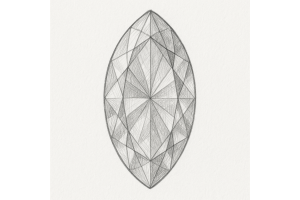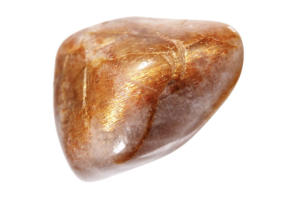GBP
/
GBP
/
Shipping to:
Currency:
Carat vs Karat: What’s the Real Difference in Jewellery Terms?
Understanding the difference between "carat" and "karat" is crucial when purchasing jewellery, as these terms refer to distinct aspects of gemstones and gold.
Let’s delve into their meanings to clarify any confusion.
Carat: Measuring Gemstone Weight
A "carat" is a unit of weight used for gemstones like diamonds, sapphires, and rubies.
One carat equals 200 milligrams (0.2 grams).
This precise measurement allows jewellers and buyers to assess a gemstone's size.
For instance, a 1-carat diamond weighs 200 milligrams, while a 0.5-carat diamond weighs 100 milligrams.
It's important to note that carat refers to weight, not size.
Two stones of the same carat weight might appear different in size depending on their cut and shape.
If you're considering a gemstone engagement ring, check out gemstone engagement rings for a variety of options.
You might also want to explore gemstone rings as meaningful gifts for special occasions.
To understand more about where these stones come from, learn how gemstones and diamonds are formed.
Karat: Indicating Gold Purity
In contrast, "karat" denotes the purity of gold in an alloy, measured in parts out of 24.
Pure gold is designated as 24-karat (24K), meaning all 24 parts are gold without any other metals.
However, pure gold is soft and often alloyed with metals like copper or silver to enhance its durability.
Common karat ratings include 18K (75% gold), 14K (58.3% gold), and 9K (37.5% gold).
Higher karat gold has a richer colour but is also softer and more prone to scratching.
Lower karat gold is more durable due to the higher presence of alloyed metals.
If you’re shopping for a ring to wear every day, it’s worth browsing diamond wedding rings to see how karat affects design and wearability.
Regional Spelling Variations
The spelling of these terms can vary by region.
In British English, "carat" is commonly used for both gemstone weight and gold purity.
In American English, "carat" refers to gemstone weight, while "karat" specifies gold purity.
Understanding these differences is essential, especially when reading jewellery specifications from different countries.
Key Differences at a Glance
- Carat (ct): Measures the weight of gemstones. 1 carat equals 200 milligrams.
- Karat (K or kt): Indicates the purity of gold. 24K is pure gold, with lower karats signifying a higher proportion of other metals.
Frequently Asked Questions
Can a diamond be measured in karats?
No, diamonds and other gemstones are measured in carats, which denote weight.
"Karat" is used exclusively to describe the purity of gold.
Is 24-carat gold the best for jewellery?
While 24-carat gold is the purest form, it's also quite soft and prone to scratching and bending.
Therefore, it's less commonly used for jewellery that requires durability.
Lower karat gold, like 18K or 14K, offers a balance between purity and strength, making it more suitable for everyday jewellery.
How do I know the carat weight of a gemstone?
The carat weight of a gemstone is typically provided by the jeweller and should be included in any certification or appraisal documents.
Precise scales designed for gemstones are used to determine this measurement.
Are higher karats better than lower ones?
Higher karat gold is purer but also softer and less durable.
Lower karat gold contains more alloyed metals, enhancing its strength and making it more suitable for jewellery that withstands daily wear.
The choice depends on the desired balance between purity and durability.
If you’re curious about the pros and cons of stone types, you might want to compare lab-grown diamonds with natural gemstones.
Looking for something a little different? Have a look at the collection of non-traditional engagement rings for unique inspiration.








